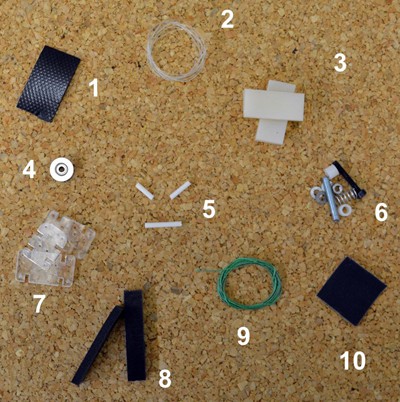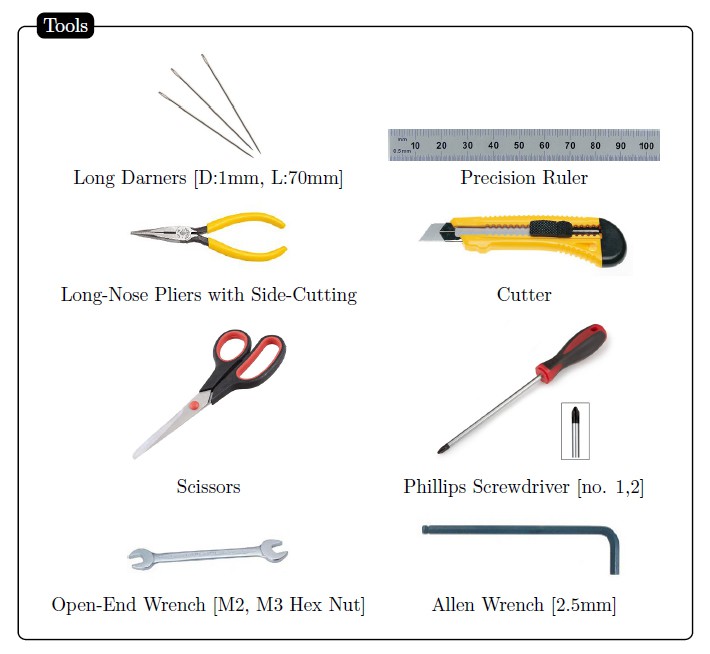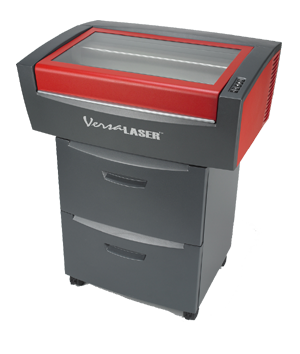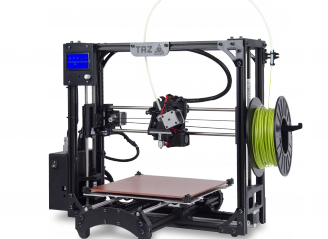All the different hand parts are created using off-the-shelf, low-cost materials that can be easily found in hardware stores around the world. For example the low-friction tubes can be substituted with common swabs used for ear cleaning, by removing the parts covered with cotton.
The materials that are used for creating the prosthetic hand are the following.
Prosthetic Hand Materials
| 1. Rubber Splicing Tape 2. Nylon Fishing Line (0.4mm) 3. Silicone Sheets, width: 4mm, 5mm, 6mm 4. Deep v-groove (1.2mm) sealed pulley rail ball bearings 5. Low friction tubes (e.g., ear cotton swabs) 6. Various Nuts, Sockets, Rods & Washers 7. Plexiglas Sheets, width: 2mm, 4mm or ABS for 3D printed version. 8. Foam Tape (4.5mmx10mm) 9. Dyneema Fishing Line (0.4mm) 10. Antislip Tape |
All materials appear in the following image with the corresponding numbers.

The tools required for the construction of our prosthetic hand are depicted in the following figure.

Two different materials have been considered for creating the different hand parts, Plexiglas (acrylic) and ABS.
For the version created with the laser cutter, we used Plexiglas (acrylic) because it is low-cost, light-weight, it can be easily found, it has good durability, significant ultimate tensile strength (8.500 - 11.250 psi) and almost the same density (1.19 gr / cubic cm | 0.043 lbs / cubic inch), with other common plastics like ABS. The laser cutting machine used, was the Universal Laser Systems VSL 3.5 that appears in the following image. The estimated fabrication time with the laser cutter is ~ 2 hrs.

For the 3D printed version we used ABS and more precisely red and white 3 mm filaments with the Lulzbot TAZ 4, 3D Printer that appears in the following image. The estimated fabrication time with the 3D printer is ~ 6 hrs.

It must be noted that the hereby proposed design can be implemented with any kind of plastic or any other material available. We plan also to develop an aluminium version and test it.
 OpenBionics
OpenBionics
Discussions
Become a Hackaday.io Member
Create an account to leave a comment. Already have an account? Log In.